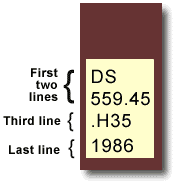What happened to Dewey? about 20 years ago, the librarians at Buhl had decided that the library had outgrown Dewey and also wanted to align with the research institutions students often went on to attend for graduate work, it was time for change…
Buhl Library uses the Library of Congress (LC) classification system to organize the books, journals, and media materials acquired by the library. The purpose of the classification system is to shelve items on the same topic together, allowing researchers to browse areas of the collection relevant to their topics. This system is used by the Library of Congress and many academic and research libraries in the United States.
The LC system categorizes materials into 21 broad subject categories indicated by a letter of the alphabet and then further divides each subject category into more specific subject areas by adding additional letter(s) and number(s). Each item acquired by the library is given a unique Call Number based on the LC classification system.
To see a more detailed breakdown of subject classes view the Library of Congress Classification Outline posted by the Cataloging and Acquisitions Office of the Library of Congress.

Book title: Uncensored War: The Media and Vietnam
Author: Daniel C. Hallin
Call Number: DS559.46 .H35 1986
The first two lines describe the subject of the book.
DS559.45 = Vietnamese Conflict
The third line often represents the author's last name.
H = Hallin
The last line represents the date of publication.

Read call numbers line by line.
LB
Read the first line in alphabetical order:
A, B, BF, C, D... L, LA, LB, LC, M, ML...
2395
Read the second line as a whole number:
1, 2, 3, 45, 100, 101, 1000, 2000, 2430...
.C65
The third line is a combination of a letter and numbers. Read the letter alphabetically. Read the number as a decimal, eg:
.C65 = .65 .C724 = .724
Some call numbers have more than one combination letter-number line.
1991
The last line is the year the book was published. Read in chronological order:
1985, 1991, 1992...
Here is a shelf of books with the call number order explained.
